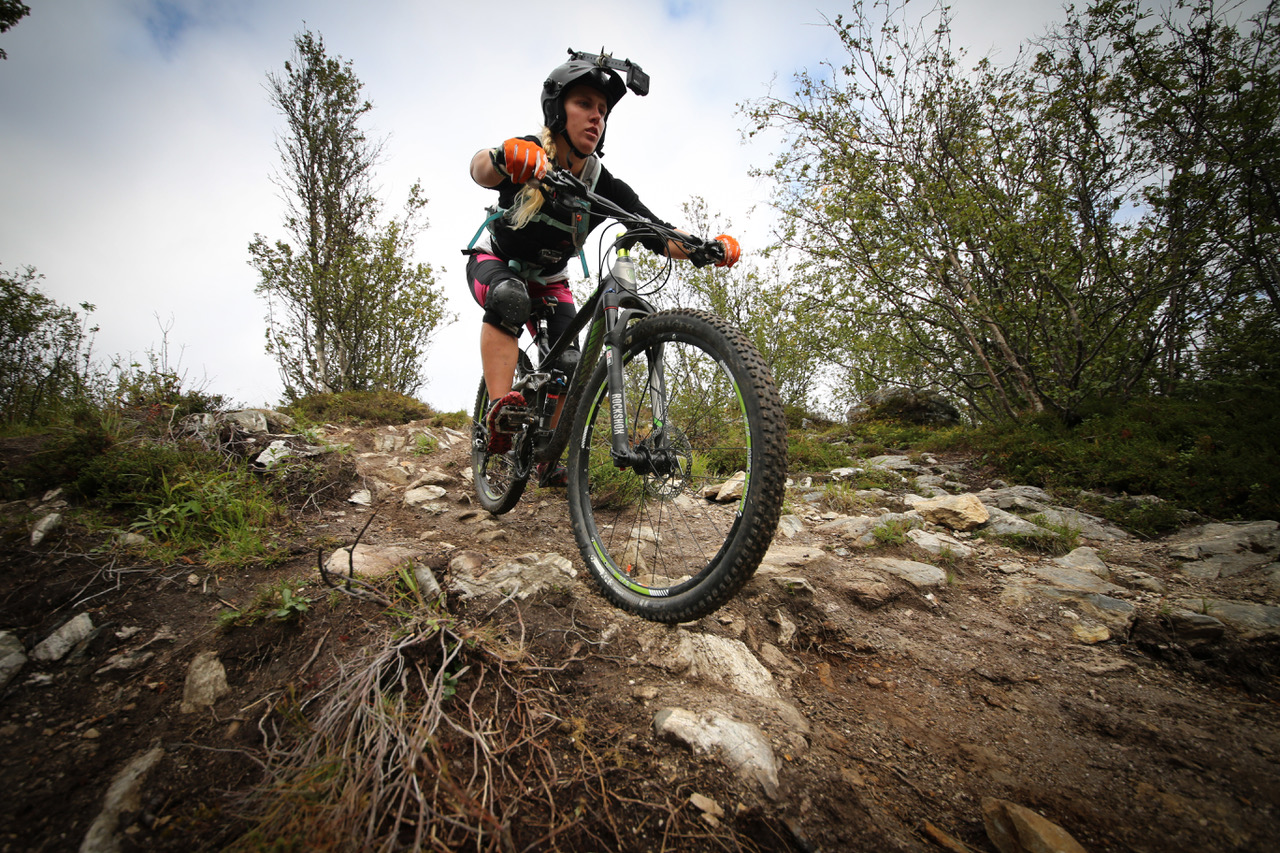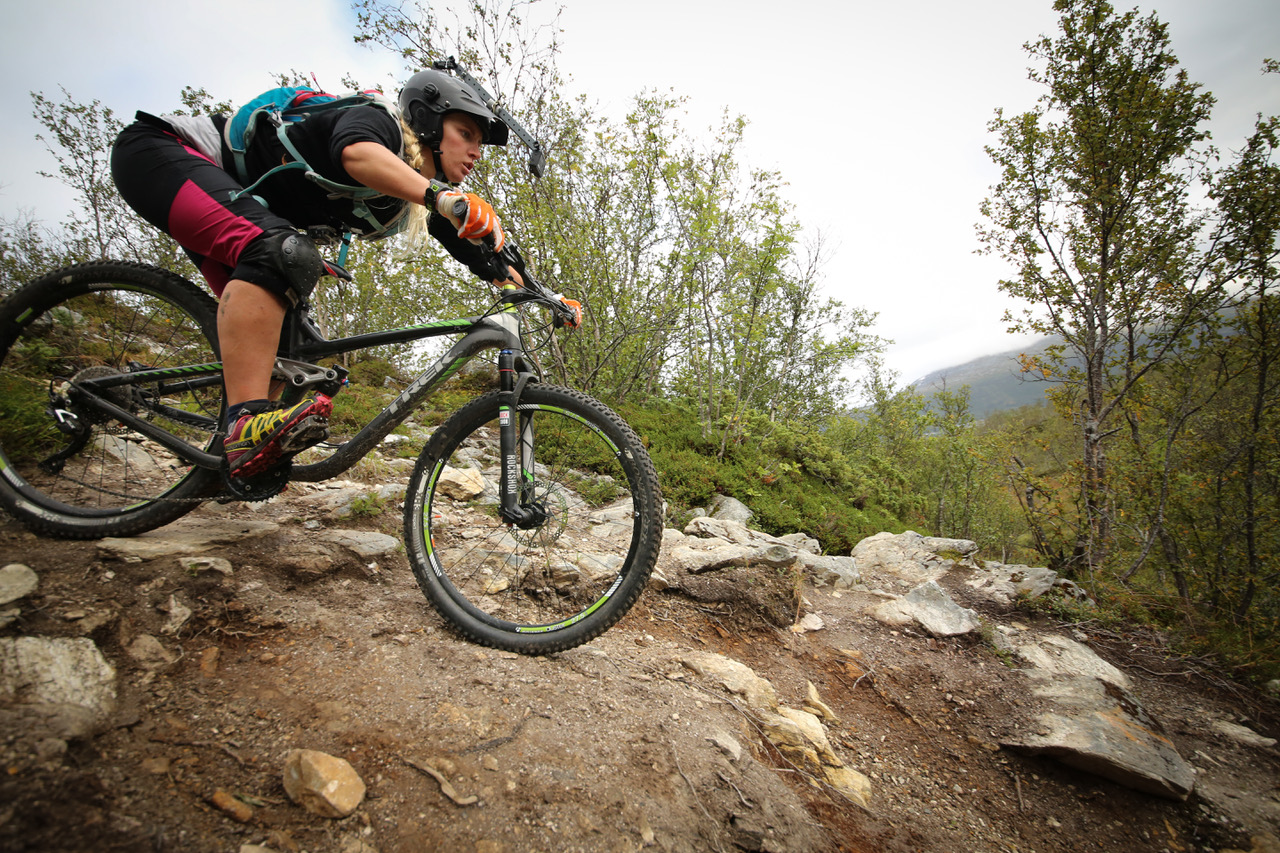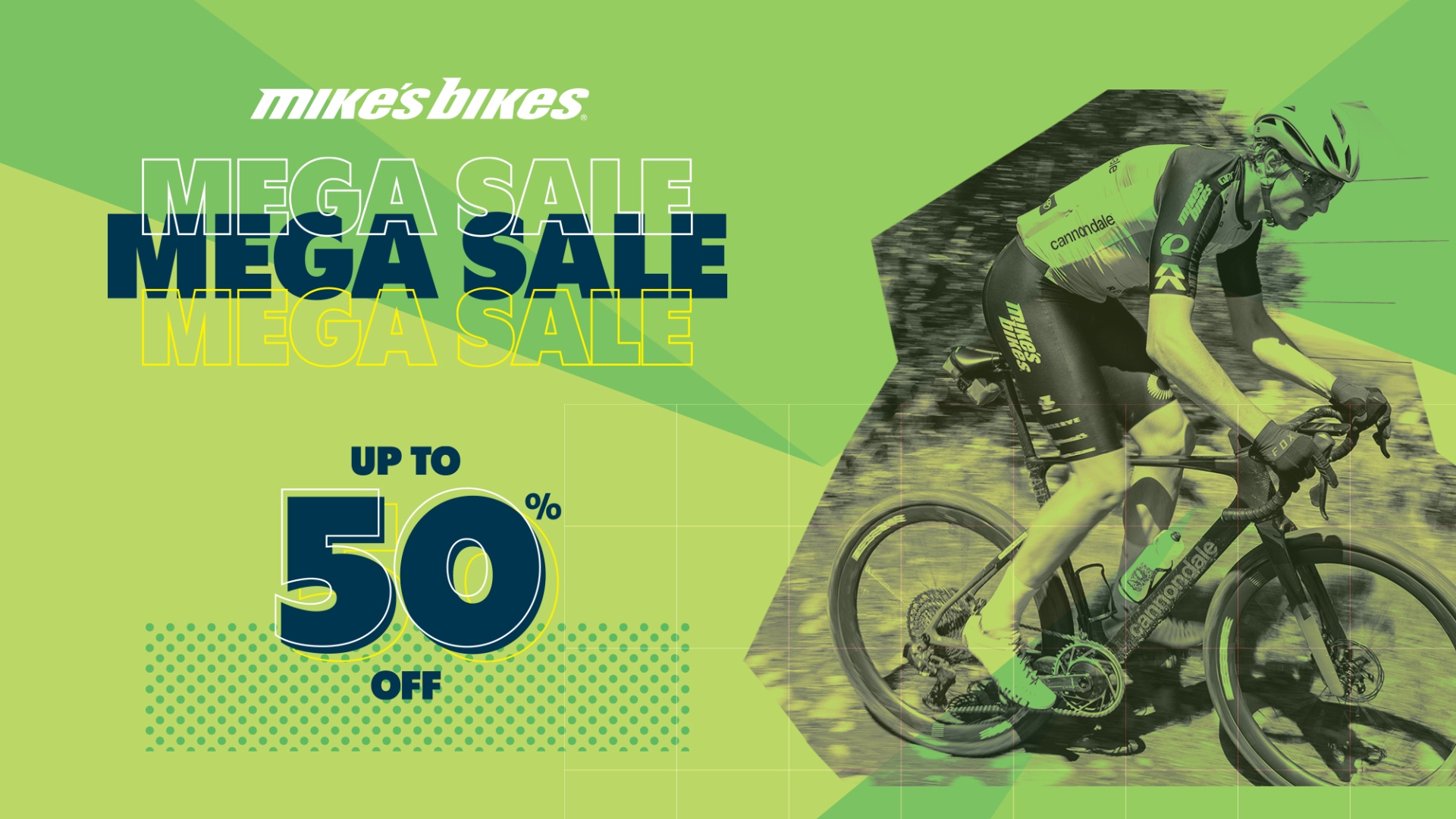Downhill mountain bikers don't actually look like they enjoy it, says study
Scientists try to explain why downhill riders look disgusted, angry and less happy during their ride

Downhill mountain bike riders don’t look like they are enjoying themselves, say scientists.
Their emotions seem to go downhill just as fast as they do.
They look disgusted before they start their adrenaline-boosting descent. Once they get going they get angry. At the bottom they seem even less happy than they were at the very start.
It’s a bizarre paradox. There’s little in their faces to show they like it at all yet DH riders return again and again to speed down thrilling tracks.
The discovery has been made by psychologists. They recruited 24 mad-for-it DH riders and used helmet cams to filmed their facial expressions.
Their faces display disgust, anger, fear and surprise. Evidence of enjoyment was scant.
“It was surprisingly easy to find volunteers because a lot of people wanted film of themselves,” says Audun Hetland, associate professor at the Arctic University of Norway.
Get The Leadout Newsletter
The latest race content, interviews, features, reviews and expert buying guides, direct to your inbox!
Hetland and his colleagues used GoPros. Instead of videoing the trail ahead, each camera was on the end of a rod sticking out in front of the helmet and pointing backwards to film each rider’s face as they hurtled downhill.
A clear shot of their faces was vital, so riders couldn’t wear goggles.
Three key stages of the event were captured by the helmet - as the rider waited to start, throughout the two-minute descent and for a few seconds afterwards.
Computer software was used to analyse the film. It is programmed to ignore the weird faces created by the close-up and wide-angle filming. “It makes them look really, really funny,” says Hetland.
The software mapped and categorised the riders’ emotions as betrayed by their facial expressions.
Here’s what shows up on the faces of DH riders:
• “Anger was actually the most prominent of the facially expressed emotions before and during the activity.”
• “Before the cycling event, participants also displayed higher levels of disgust than they did later on.”
• “Scores of happiness were reduced during downhill-movement.”
• “Anger was increased during downhill-movement.”
• “Fear and surprise seem to increase during the run.”
• “Participants expressed less momentary happiness while riding the bike, compared to before the ride and also a trend showing less happiness after they had stopped.”
Clearly something interesting is going on, the psychologists say, because the DH riders said after each run they find it rewarding, in contrast to what their faces showed.
As Hetland and his colleagues report, there is “no relation between the online [filmed] emotions and self-reported post-event emotions.”
The psychologists have theories about why good feelings about a DH ride emerge only some time later. First, they suggest reasons why they look disgusted, angry and less happy during the event.
They speculate that the higher levels of disgust on riders’ faces just before the start could be due an unconscious rejection or aversion towards what they are about to experience.

The anger before the start could be a rider anticipating problems ahead. Likewise, during the descent, they simply get angry every time they face an obstacle.
Of course, computers are not perfect and the software may be confusing concentration with anger because they look similar, the psychologists readily admit. Both facial expressions are characterised by lowered eyebrows and tightened eyelids.
“If facially expressed anger instead represents concentration this would explain the high levels before and during, and a reduction after the activity was over,” the researchers speculate.
They have two theories about why these expressions dominate the faces of DH riders and why they smile less as they bomb downhill.
1. “A difficult task keeps the attention strictly focused on performing each step, … reducing the mind’s capacity to attend to the accompanying stream of feelings. However, the feelings are still there.”
2. “People do have emotional experiences during [the descent but] these experiences are not characterized by enjoyment, but rather by feelings of interest, immersion and engagement”
Hetland himself is no stranger to hazardous cycling. His commute on a mountain bike is not for the faint-hearted.
There is thick snow for much of the year, steep hills and a sled to tow, carrying his two children to kindergarten.
That’s why he recruits help from two huskies, attached by reins to the headtube of his hardtail. They pull him along and the daily journey is less than predictable.
“I’m scared several times a week,” he says, “I’m really living on the edge on my ride to work.”
Sadly, there is no footage available of his facial expressions. “I haven’t analysed my emotions yet but maybe I should,” he laughs.
Hetland is no stranger to danger. He’s been skydiving for many years and then started investigating the motivation for people to do extreme sports. For his research he tried basejumping.
“It was very scary until one jump it became really, really fun. So, I had to quit,” he says, sensibly. He’s also analysed why people choose other risky sports, including skiing and kayaking.

“I am interested in my own motivation as well as that of other extreme sport participants, including downhill mountainbikers.”
The films of DH riders’ faces give him more information to work out what makes people do extreme sports.
“Extreme sport athletes report happiness as one of their main motives,” say Hetland and his colleagues in their latest study. It is “not because extreme sport is an activity filled with momentary happiness, but because it creates an opportunity for development and growth - and that feels good and makes you happy.”
It’s clearly a subject he enjoys, even if his volunteer DH riders get disgusted, angry and fearful.
The full study is published online.
See: The Thrill of Speedy Descents: A Pilot Study on Differences in Facially Expressed Online Emotions and Retrospective Measures of Emotions During a Downhill Mountain-Bike Descent by Audun Hetland, Eirik Kjelstrup, Matthias Mittner and Joar Vitterso

Thank you for reading 20 articles this month* Join now for unlimited access
Enjoy your first month for just £1 / $1 / €1
*Read 5 free articles per month without a subscription

Join now for unlimited access
Try first month for just £1 / $1 / €1
-
 Mike's Bikes 'mega sale' is live and site wide with discounts over 50%
Mike's Bikes 'mega sale' is live and site wide with discounts over 50%Running until Sunday all products are discounted including complete bikes, clothing, smart trainers and much more
By Luke Friend
-
 Can you be a pro athlete and an environmentalist? Earth Day reflections from a pro cyclist trying to be both
Can you be a pro athlete and an environmentalist? Earth Day reflections from a pro cyclist trying to be bothHow Sarah Sturm reconciles her life as a pro cyclist with her environmental values
By Sarah Sturm